This was published 5 years ago
Outback station stays, South Australia: How to get a real feel for Australia's outback
By Max Anderson
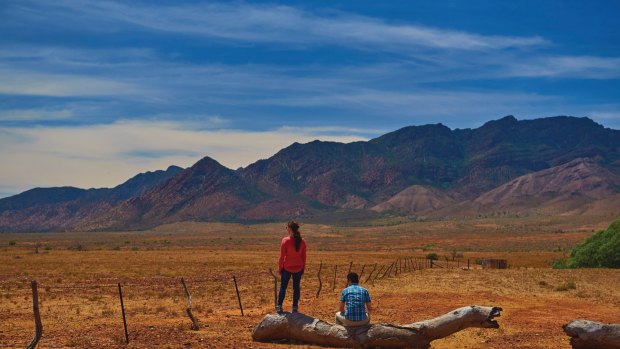
Merna Mora Station, Moralana Scenic Drive.Credit: Adam Bruzzone
A station stay in South Australia offers a quintessential outback experience without costing the earth. Better still, it can provide some relief for drought-stricken pastoralists.
Imagine a private country larger than Jamaica with a permanent population of about 200 people. It's a place of ranges, forests, deserts, salt lakes and pasture, and it harbours a history that stretches back thousands of years. You don't need a passport to enter, but once inside, it's yours to explore. This is the very real proposition of Station Stays SA, a confederation of 28 outback properties with a combined size of about 12,000 square kilometres. All are working stations running mostly sheep and cattle and show life on the land – during the good times and the bad. See stationstayssa.com.au
The year 2018 was most definitely a bad one, with drought putting station owners under duress. And though it may seem counter-intuitive, there's never been a better time to spend a weekend, or a week, on a station. For one thing, it's good for city folk to see the lean times up close and hear about it from the farmers themselves. For another, visitors can be part of the relief effort.
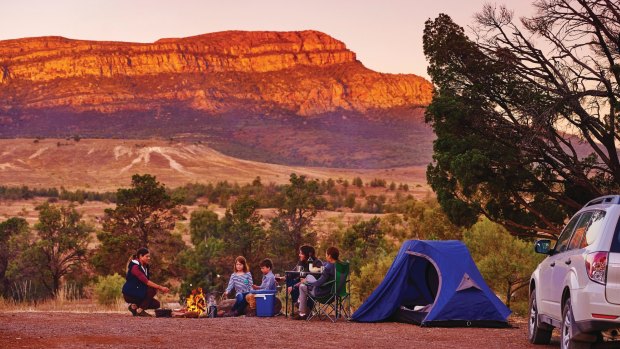
Rawnsley Park Station.Credit: Adam Bruzzone
Most of the 28 properties can be reached inside five hours' drive of Adelaide (11 are in and around the vast Flinders Ranges National Park) and are quite diverse.
Clayton Station is a 259,000-hectare property on the Birdsville Track in the state's far north. See claytonstation.com; Mount Ive is way out west on Eyre Peninsula, in the ancient and less-visited Gawler Ranges. See mtive.com.au
The southernmost station, Willangi Bush Escapes , is a "tiny" 3885 hectares of rolling saltbush hills in the mid-north, just three hours from the capital. See willangibushescapes.com
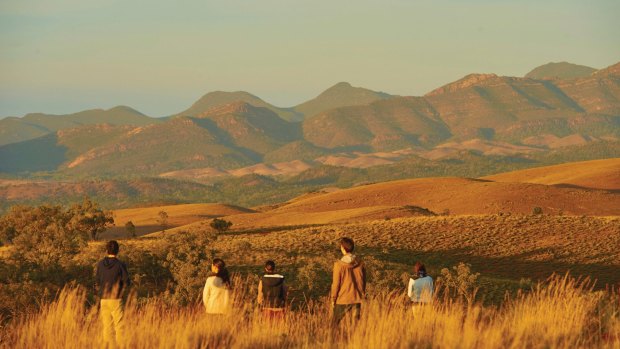
Upalinna Lookout, Skytrek Willow Springs Station.Credit: www.adambruzzone.com
The landscapes vary, the stories differ and the overnight options range from humble pug-and-pine huts to finely tailored eco-retreats. But common to all is the business of keeping it real and affordable, providing a win-win opportunity to indulge in the luxuries of space and freedom while doing some good.
Make tracks
Station stay tourism has been partly sustained by the 4WD community and driving trails are still a big part of the experience. The trails, which are basically rugged working tracks given a bit of maintenance and unobtrusive signage, offer visitors the chance to see spectacular country. Drivers pay from $20 to $90 a vehicle and are furnished with a few rules (mostly pertaining to gates) and a detailed map. If you don't have a 4WD and/or driving experience, most stations will take you on guided tours in station vehicles.
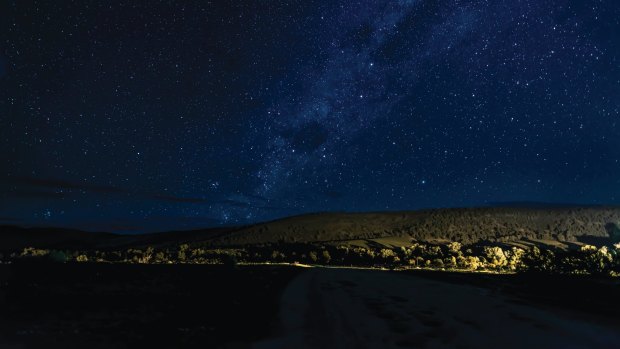
Rawnsley Park Station.Credit: John Montesi
Trails are rated either moderate or challenging. Willow Springs' Skytrek (skytrekwillowsprings.com.au) is one of the bigger trails, a seven-hour exploration of plunging valleys and soaring uplands. Bendleby Ranges (bendlebyranges.com.au), located in handsome but almost forgotten country east of Carrieton, has a beginners' track as well as a track so rugged it's used by tyre manufacturers to stress-test their product. And on Alpana near Blinman, parts of the Sunset Hill 665 drive can be done in the family 4WD.
For most visitors it's less to do with giving the diff-locks a workout and more about what there is to see. On Skytrek, for instance, you'll encounter populations of yellow-footed rock-wallabies, stone shepherds' huts and groves of 300-year old grass trees. The ridge lines reveal views over the ABC Range, the Heysen Range and the eastern ramparts of Wilpena Pound, with the latter timed, rather conveniently, for sunset drinks.
One of the biggest draws of being on private land is gaining new perspectives on old landmarks, as well as views of some landmarks you didn't even know existed. Horseshoe Top-End (horseshoetopend.com.au) and Horseshoe Rim (horseshoerim.com.au) west of Quorn in the southern Flinders are cases in point. They both look on to the Horseshoe Range, labelled by geologists as a "mini Wilpena Pound". Bearing a strong resemblance to its larger more famous namesake, the landform is a relic of a worn mountain that looks like a vast crater and 99 per cent of Australians simply don't know about it.
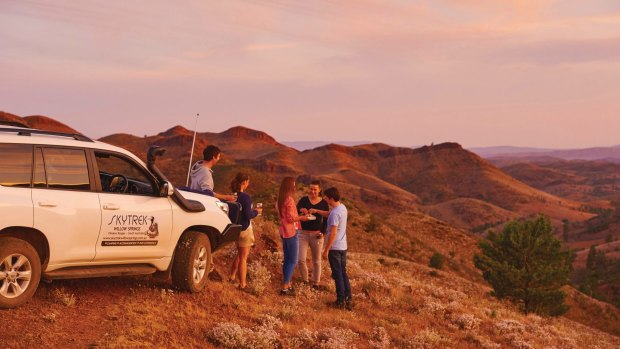
The Skytrek trail at Willow Springs covers 80 kilometres of plunging valleys and soaring uplands and 50 points of interest. Credit: Adam Bruzzone.
Mount Ive in the Gawler Ranges adjoins a vast and little-visited salt lake called Lake Gairdner, a 4300-square-kilometre vista that's dazzling in all respects. And Farina Station (farinastation.com.au), in the gibber country on the Oodnadatta Track, has bizarre ponds so salty they grow salt crystals yet also harbour species of fish. If that's not enough, the same station also does tours of an 1880s ghost town that the station owners have been helping to restore.
Hidden histories
Many of these stations are home to rarely-seen Aboriginal paintings and petroglyphs. Spear Creek in the western Flinders has trees scarred by Indigenous people who have carved out boomerangs and shields. In 1994, a bushwalker on the property stumbled across hitherto unrecorded ochre paintings. See spearcreekcaravanpark.com.au
Fans of the explorer John McDouall Stuart should check out Moolooloo, which was once owned by Stuart's financial benefactor, James Chambers. Stuart left Moolooloo on several expeditions including his final epic crossing of Australia. This nationally significant site is almost off the radar. See moolooloo.com.au
Wilkatana (wilkatana.com.au), north of Port Augusta, is home to Depot Creek established by the explorer Edward John Eyre. Eyre Peninsula's Nuttbush Retreat (nuttbush.com.au) is on one of the state's oldest pastoral leases and has its own museum. West of the Flinders, visitors are welcome to fossick at Merna Mora (mernamora.com.au), which has historic lime kilns on its properties as well as reef fossils dating back to the Cambrian period.
Board and tucker
The caravan and camping contingent (closely allied to 4WDers) were a mainstay of the early station operations and their loyalty is rewarded with pretty – often isolated – campsites, generous amenities and modest prices.
The cheapest camping is at far flung Farina Station where you can pitch your tent for just $5 a person a night. Shepherds' cottages, homesteads and the shearers' quarters also make for affordable accommodation, loved by groups and families for the communal spirit around the barbecue areas and fire pits.
Old station buildings with mortared walls sometimes lack finesse but pile on the character. The gorgeous cottage at Alpana (alpanastation.com) near Blinman was cobbled together from Cyprus pine logs and lime mortar. With only a dry creek for company, candles for light and long drops for comfort, it's as basic as it is beautiful, and costs just $60 a couple a night. Catninga Station (catninga.com) east of Port Augusta has kept it cute and kooky by converting an old railway carriage. The villas at Clayton feature an artesian-fed hot tub. And Willangi Bush Retreat has an "executive bathroom suite", an alfresco bath enclosed by plants and corrugated iron.
A handful of stations feature upmarket sanctuaries with rooms costing north of $300. Flinders Bush Retreats (flindersbushretreats.com.au) has a handsome period homestead furnished with leather sofas, a flat screen TV and iPod dock. Gum Creek Station (gumcreekstation.com.au) near Blinman has recently opened a contemporary lodge perched on a ridge suitable for executive escapes. And at Rawnsley Park (rawnsleypark.com.au) near Wilpena Pound guests can be helicoptered with a swag and two-course dinner to the top of the Chace Range for $595 a person.
As for food, most stations expect visitors to bring their own provisions to self-cater, although often there will be barbecue packs available from the homestead.
Properties with more sophisticated facilities include Gum Creek Station, which has a catering business called the Epicurean Tuckerbox (ideal for upmarket groups). Rawnsley Park serves modern Australian cuisine in the Woolshed Restaurant. And befitting its remote location, Mt Ive Station has a licence to serve alcohol, encouraging strangers to share a drink at a lively little counter called the Spinnifex Bar. Raising a glass in the outback of course is always a good thing – a bona fide drought breaker.
SKY'S THE LIMIT
Michelle Reynolds, the owner of tourism operations on the 28,300-hectare sheep station, Willow Springs, kicks her 4WD into low-range. "Definitely good to take this bit slowly," she says, slowly grinding up a gnarly stretch of Skytrek. We're rewarded with views of late sun on serried ranges to the east, a great place for a sunset beer and a chat.
"The wool crash prompted my parents to diversify into accommodation in 1986. In 1995, Dad did 51 hours of dozer work on old mining and goat shooter tracks over the ridge tops, and we opened Skytrek," says Reynolds.
The trail costs $60 a vehicle for guests to self-drive the 80 kilometres and 50 points of interest. Alternatively, for $230 a person, Reynolds will drive them on a full-day tour with morning tea and lunch provided.
Willow Springs' campsites cost from $12.50 a person, while five self-contained accommodations range from Jackaroo's Cottage ($65 a person) to the original 1930s homestead ($430 for four).
"Guests are free to walk around the property including the woolshed, where they can sometimes watch shearers and ask questions. People like to go for walks, feed our chooks, play with our dogs. Kids especially love going down to the creek to make cubby houses.
"Often someone will arrive and say, 'aww, there's no Wi-Fi!', but when they leave they say it's the most family time they've had in ages." See skytrekwillowsprings.com.au
FIVE WAYS TO DO A STATION TRACK
IN YOUR OWN 4WD
Kick that Toorak tractor in the guts and see it for what it was built for. Any trail marked "challenging" will require low-range and owners reserve the right of refusal if your hardware is lacking. All-wheel drive sports utility vehicles are suitable for gentler trails. Waivers will need to be signed.
IN THEIR 4WD
It's a more expensive way to go, but some of these properties have been in the same family for five, even six generations. That's valuable knowledge behind the wheel.
ON TWO WHEELS
Mountain biking has become huge – especially in the quad-punishing Flinders – and trails welcome a treadly.
ON FOOT
Same lonely paddocks, same dry creeks, same ridge tops, just more sedate. Bird watchers and photographers are very partial to wearing out shoe-leather on station tracks.
ON FOUR LEGS
Owners can take their horses to Catninga cattle station, while Clayton Station offers five- and 10-day trail rides in the cooler months. Both invite riders to help out if there's mustering to be done.
TRIP NOTES
Max Anderson was a guest of Flinders Ranges and Outback, South Australian Tourism Commission.
MORE
southaustralia.traveller.com.au
FLY
Major airlines fly frequently between Sydney and Melbourne to Adelaide; car hire is available from Adelaide Airport. See qantas.com.au; virginaustralia.com; jetstar.com; tigerair.com
Sign up for the Traveller Deals newsletter
Get exclusive travel deals delivered straight to your inbox. Sign up now.